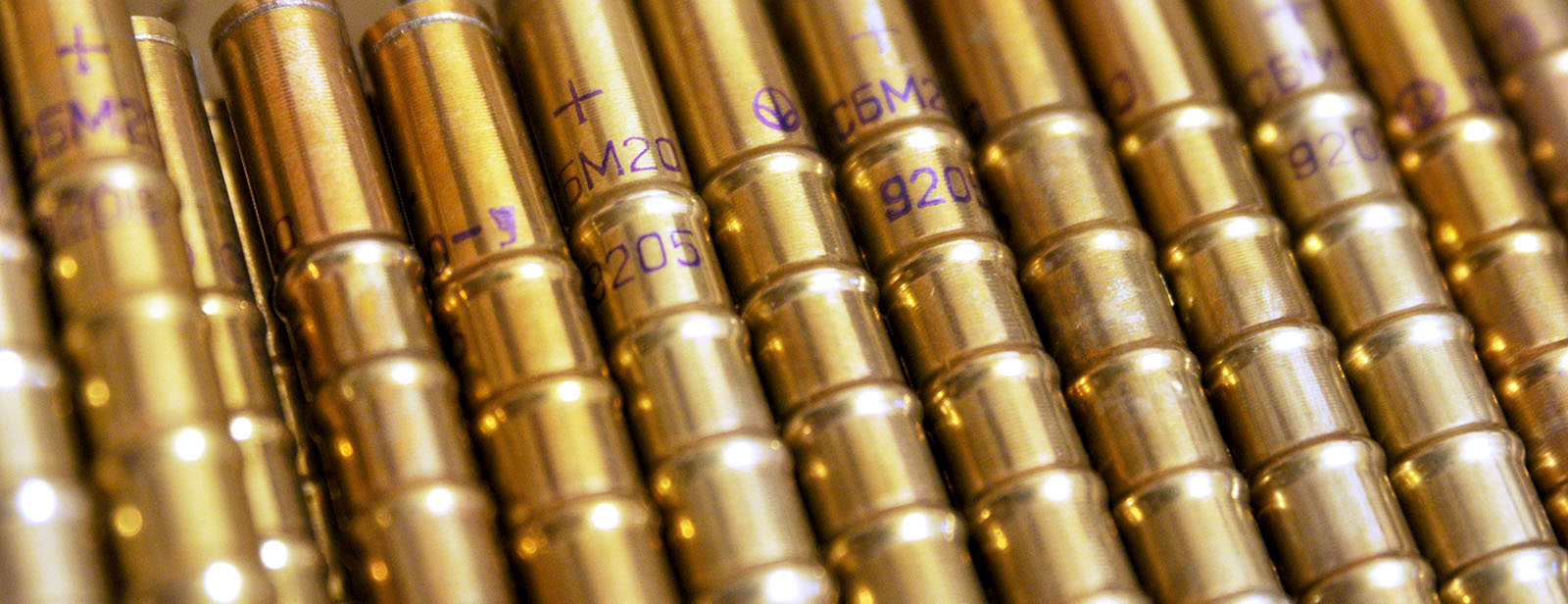
The Geiger tube is a gaseous ionization detector that uses the Townsend avalanche phenomenon to produce an easily detectable electronic pulse from as little as a single ionising event due to a radiation particle. It is used for the detection of gamma radiation, X-Rays, and alpha and beta particles. It can also be adapted to detect neutrons. The tube operates in the “Geiger” region of ion pair generation.
A Geiger Muller tube like other gas filled detectors has an anode and a cathode in an envelope that contains a gas at low pressure (for most tubes, in the range 50 to 100 torr). The main component is an inert gas such as helium, argon or neon, in some cases in a Penning mixture, and a quench gas of 5-10% of an organic vapor or a halogen gas to prevent multiple pulsing. There may also be a special ‘window’ of radiation transparent material either at one end of the tube or in its side. Some tubes also have an integral radiation shield as part of the outer walls where this is required for modifying the performance characteristic.

When ionizing radiation strikes the tube, some molecules of the fill gas are ionized, either directly by the incident radiation or indirectly by means of secondary electrons produced in the walls of the tube. This creates positively charged ions and electrons, known as ion pairs, in the gas. The strong electric field created by the tube’s electrodes accelerates the positive ions towards the cathode and the electrons towards the anode. Close to the anode in the “avalanche region” the electrons gain sufficient energy to ionize additional gas molecules and create a large number of electron avalanches which spread along the anode and effectively throughout the avalanche region. This is the “gas multiplication” effect which gives the tube its key characteristic of being able to produce a significant output pulse from a single ionising event

The discharge is terminated by the collective effect of the positive ions created by the avalanches. These ions have lower mobility than the free electrons due to their higher mass and remain in the area of the anode wire. This creates a “space charge” which counteracts the electric field which is necessary for continued avalanche generation. For a particular tube geometry and operating voltage this termination always occurs when a certain number of avalanches have been created, therefore the pulses from the tube are always of the same magnitude regardless of the energy of the initiating particle. Consequently there is no radiation energy information in the pulses which means the Geiger-Muller tube cannot be used to generate spectral information about the incident radiation.

The Russian SBM-20 is a small/medium size Geiger Muller tube, designed to detect Gamma and Hard Beta radiation. The robust design made it a popular choice in commercial dosimeters all over the world.
We just got a new batch of tubes that will join the project as uRADMonitor dosimeters.
More information on Geiger tubes is available on:
Centronic Geiger Tube Theory
Wiki
An introduction to Geiger counters
codemore code
~~~~